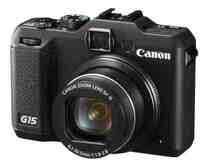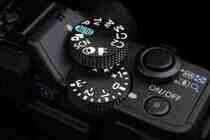Canon PowerShot G15 review
Now that compact system cameras (CSCs) are available for as little as £350, is anyone going to buy a conventional compact camera that costs over £500? Canon clearly thinks so, but then, the G15 doesn't bear much resemblance to most compact cameras.
It's built around a 1/1.7in sensor – smaller than CSC sensors but bigger than the ones used in most other compacts. It sits behind a wide-aperture lens, at f/1.8 for wide-angle shots and f/2.8 for telephoto. Together, the sensor size and wide-aperture lens are a potent combination for maintaining high image quality in low light.

The G15 isn't the only camera with this combination of sensor and lens. It has some formidable opponents in the forms of the Panasonic LX7 and Fujifilm X10 . The G15 is marginally the heaviest of the three but its chunky body inspires confidence for build quality. We'd be more worried about the floor than the camera in the event of a fall. There's just enough shape to the textured handgrip to sit securely in the hand, so hopefully it won't be slipping through fingers too often.

This is one of very few compact cameras to incorporate an optical viewfinder – a crucial feature for long-sighted people who struggle with LCD screens, and useful when shooting in bright light when the screen is hard to see. The viewfinder zooms in tandem with the lens, but it's a small, blurry view that's heavily cropped compared to what the sensor sees. The viewfinder on the Fujifilm X10 is much better quality. The G15's screen is much better with its sharp 922,000-dot resolution, but it's disappointing that it doesn't share the older G12's articulated design.
This chunky camera affords lots of room for controls. There's a wheel and command dial for controlling shutter speed and aperture in manual exposure mode, plus a dedicated exposure compensation dial. The latter encouraged us to adjust the exposure much more often than with cameras that require a button press to bring exposure compensation up on the screen. With dedicated buttons for AE Lock, ISO speed, autofocus point, metering mode and an option to assign white balance to a customisable button, there's little reason to reach for the menu.

Drive mode is one reason, though. We wonder whether Canon chose to hide it away in a menu because the G15’s continuous performance isn't much to get excited about. It managed 1.8fps for JPEGs, 1fps for raw and just 0.8fps when updating autofocus between each shot. It doesn't compare well to the Panasonic LX7's 5fps with updating autofocus. Canon tries to make up for it with a scene preset that captures 10 shots in a second, but with a blank screen during capture and six seconds to recover, for us the compromises outweigh the benefits. General shot-to-shot times are on the slow side, too, at 2.3 seconds in our tests. The LX7 and X10 were almost three times as fast. At least the G15's flash refresh times are reasonably nippy, at 3.1 seconds at full flash power.